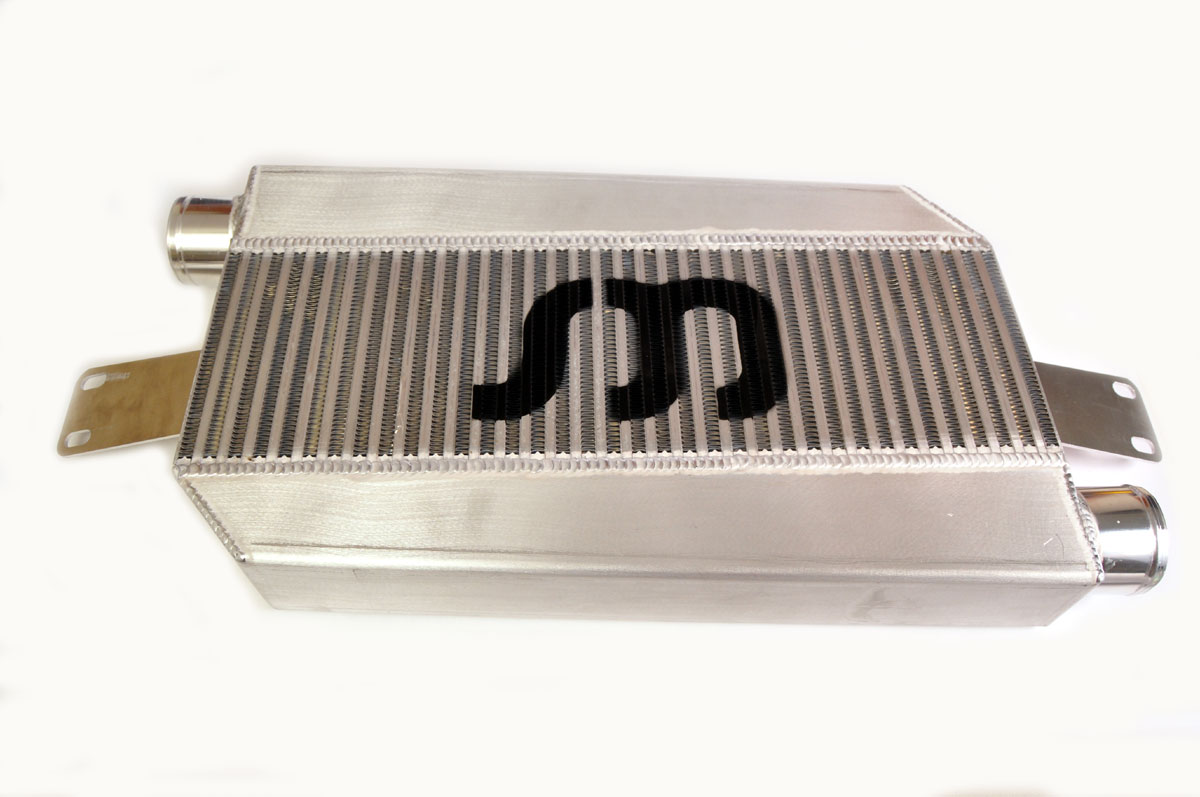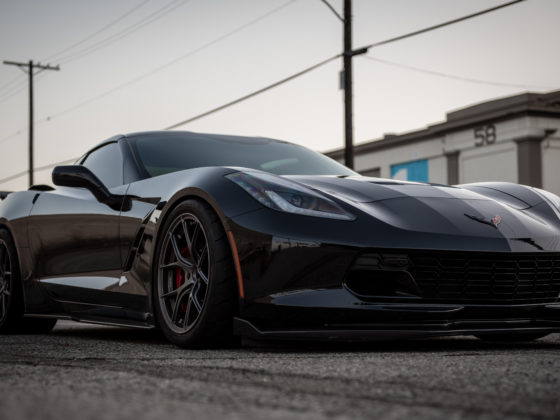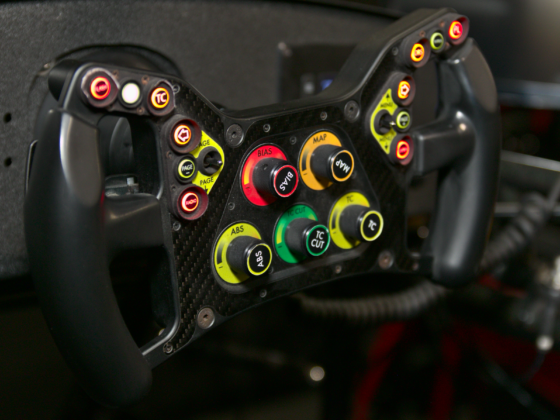Optional Parts
We opted for three additional parts of our kit. First the Injector Dynamics pig tail adapters. After working on other complicated parts of the install we thought wiring up the injectors should be easy. These plug and play adapters plug directly into our new ID1050x injectors and into our factory wiring harness. They eliminate the need to solder wires in the engine bay.

Secondly, we opted for the SPAL fan harness and relay to power our Aeromotive fuel pump. This harness eliminates the factory power wire used to power the fuel system. Large 8 gauge wires for power and ground and a 40 amp relay provide more than enough current capacity. The upgraded wiring ensures our Aeromotive fuel pump will not only perform optimally but it reduces the chance of causing a fire when drawing more current than the factory wires were intended for.
 Finally, we ordered a crash bar that replaces the factory crash bar that must be removed to fit the intercooler. Safety is still a priority and we couldn’t in good conscience eliminate a major factory chassis reinforcement point. The crash bar also comes with a threaded fitting to use the included tow hook. Our original Infiniti tow hook also works without issue.
Finally, we ordered a crash bar that replaces the factory crash bar that must be removed to fit the intercooler. Safety is still a priority and we couldn’t in good conscience eliminate a major factory chassis reinforcement point. The crash bar also comes with a threaded fitting to use the included tow hook. Our original Infiniti tow hook also works without issue.


Breathing in
The K&N air-filter is mounted directly off the supercharger inlet and just barely fits between the vortech supercharger and the radiator core support. Funny enough it’s a K&N filter off a Harley Davidson because, Merica. The air-filter actually gets a nice stream of air fed by the opening in the core support where the highly efficient factory air boxes were formally fed air. Those that want to go full race setup can ditch the air-filter all together and use an air guard. Removing the air filter like this can net an additional 60-70 whp.

The 50mm tial Q Blow Off Valve (BOV) discharges the boosted intake charge to the atmosphere when the throttle plate is closed. The Q is Tial’s highest flowing valve. Since the air filter is directly fitted to the supercharger there isn’t an option to re-circulate the boost.

The pile of parts is getting high and we’re itching to alter atmospheric conditions in our engine. While we wait, we will triple check our list but inevitably we know there are going to be some last minute issues. Our next article will cover the install where all this stuff comes together.




14 comments
Wait, 60-70whp from a filter? Do you mean 6-7?
Yes 60-70whp in forced induction doesn’t seem out of the realm of reality. We haven’t confirmed this with our own car this was confirmed by both Soho and our tuner at Specialty Z.
Here are a couple of dyno charts for your reference if you scroll down a bit on these pages. While they don’t show the results with the filter on and off they are really big numbers for a supercharged v6. Based on the numbers we’ve seen on our car and others I’d think these runs were with the turbo guard.
https://sohomotorsports.com/products/soho-motorsports-a2a-supercharger-kit
https://sohomotorsports.com/products/soho-motorsports-air-to-air-upgrade-for-the-stillen-vq37vhr-supercharger-kit
In this particular case with a supercharger, 60-70whp seems reasonable. Once you see the install, you’ll see how little space is available for the filter and why the small K&N from the H-D was used. Relatively speaking, this filter is highly restrictive. On a turbo car, you can adjust the wastegate to spin the turbo faster. On a supercharger, it only spins as fast as the fixed pulley sizing will allow, so it can’t compensate for loss of mass air flow due to the restrictive air filter. So, 60-70whp loss is the result.
Because of space constraints, this is a silly small filter. In the future, we might cut a hole in the core support and fabricated something less restrictive to test.
why the move to air to air? whats wrong with air to water?
If you have the space, air to air is generally better, air to water systems have smaller bricks and greater pressure drop and the water side has smaller heat exchangers and can thermally saturate more easily.
is it possible to make an air to water system that won’t saturate? that would fit in a car that is, not some enormous system in a lab with no space constraints… or will all air to water systems saturate? specifically in a lapping day scenario with 20-30 min sessions…
It can be done. Just have to size a really big radiator for the IC system. Ferrari ran an air-to-water setup on their F1 car. so yeah, it can be done.
I think You would be better off using some sort of cobra-head silicone hose and re-routing the filter somewhere more sensible.
https://www.do88.se/en/artiklar/silicone-hose-_-hoses/silicone-hose-black/cobra-head/index.html
I’ve never seen a silicone hose like that before. I took a look at the flow charts and it seems like the testing is there to prove the airflow improvements over a 90 degree hose. At some point we’ve got to punch through the core support and get past the radiator to the fresh air in front. I’d think we’d also want a shield to prevent turbulence in airflow; similarly to what was on our V3 cold air intakes from Stillen when the car was N/A.
This is definitely top of mind before we start looking at e85 or adding more boost.
Do you have a part number for that KN Filter?
I’ll get in touch with the vendor and get the part number.
The part number is a K&N # RX-4130-1
What would you think the hp gains would be like with running soho’s air upgrade that they use on their new a2a kits? it routes it to the front around the bov with a full filter like you described. I will also be running a 9lb pulley with long tube headers hoping to make 600whp on 93